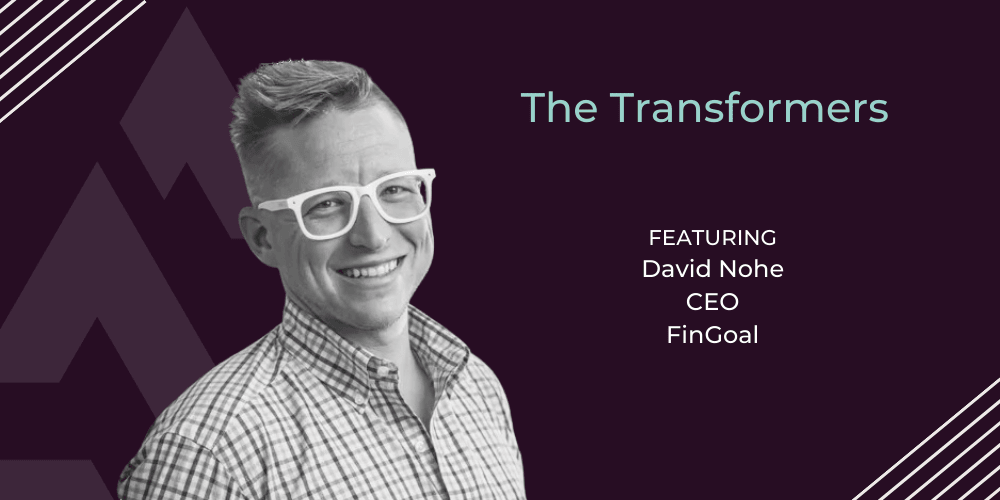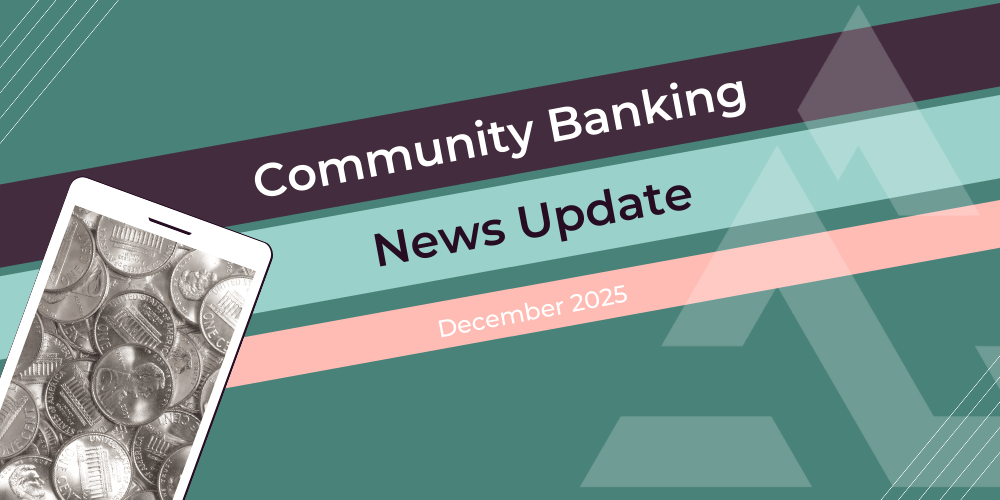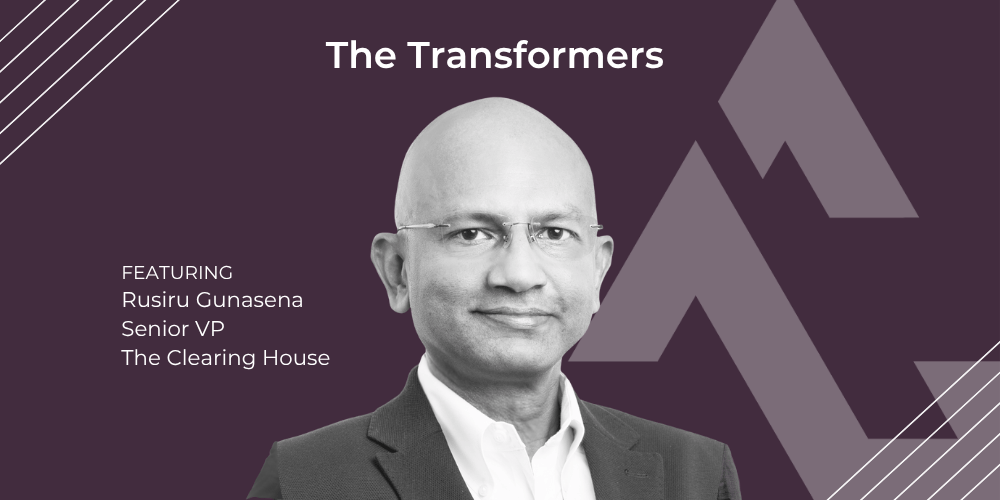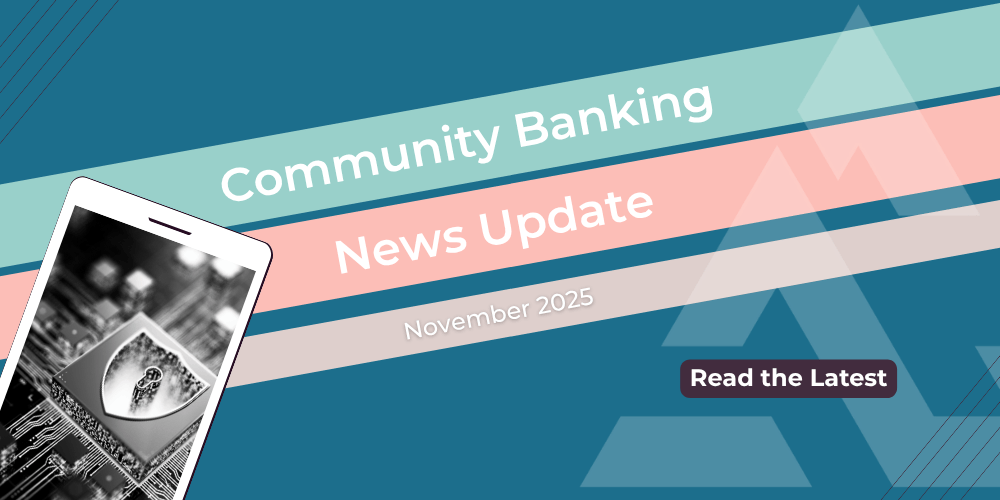Exploring Open Banking, Data Strategy, and International Payments.
David Nohe, CEO and co-founder of FinGoal, built a career at the intersection of technology and financial services, with a particular focus on creating data-driven insights that empower community financial institutions. From his early work at Apple during the launch of the iPhone to founding technology companies that bridge the gap between innovation and everyday banking needs, David is working to make financial services smarter and more actionable for community banks and credit unions.
In this installment of The Transformers, a series spotlighting innovators driving advances in digital banking, we explore David’s thoughts on the CFPB’s Rule 1033 and Open Banking, and how to leverage data to create new opportunities for community financial institutions.
You have such a diverse background spanning tech, law, and finance. Can you share a bit about how you ended up founding FinGoal?
I’ve been involved in building technology since grade school, but my professional journey started at Apple where I had a small part in bringing the original iPhone to market. After Apple, I went to law school and transitioned to management consulting, primarily in healthcare. This led to the founding of Wellfit, a payments company focused on solving the affordability of dentistry.
When Wellfit was acquired, my wife and I wanted to create a data-driven product in consumer finance — guiding users on their daily actions to hit their financial goals, not just providing a ledger of past transactions. That idea became FinGoal, which we launched in 2019. Now, five and a half years later, we’re helping over 130 financial institutions better understand their account holders through data and actionable insights.
How does FinGoal work with financial institutions?
We integrate at the digital banking and core levels to extract transaction data — whether in real-time or through nightly updates — from various account types, including checking, credit card, and loans for both business and consumer accounts. We clean and categorize the data and generate automated segments, attributes, and next-best actions — like identifying when a customer is shopping for a loan or predicting future financial needs.
These insights are then embedded directly into the bank’s existing systems, making their current tools smarter and more effective. We don’t sell marketing systems or CRMs to banks. Instead, we embed our intelligence into tools banks already use, like Salesforce, HubSpot, or FI-specific platforms like Quest Analytics, KlariVis, Core IQ, and Prisma, or cores like Jack Henry. It can power smart lead lists in CRMs for lenders, show competitive analysis in reporting tools, or enhance customer interactions in teller systems. For instance, a teller might see insights about a customer who is likely to start shopping for a HELOC and tailor their conversation accordingly. Similarly, marketing teams can use our intelligence to target the right customers with offers through their existing tools.
One of the first things we do when working with a bank is analyze their transaction history to uncover opportunities — whether it’s deposit churn, unmet customer needs, or competitive threats. This data-driven approach helps banks identify their best growth opportunities, whether it’s international payments or treasury management or whichever area the financial institution is focused on.
If banks aren’t thinking strategically about data yet, they’re already behind. Start small, but start now.
International payments are a growing focus for many banks. What’s your perspective on this opportunity?
International payments offer significant potential, especially as our world becomes more global. Whether serving commercial clients involved in overseas commerce or consumer customers sending remittances, banks need to include international payments in their strategic planning.
Ignoring these needs could mean losing business to competitors that offer comprehensive solutions. Customers want to consolidate their banking relationships, so providing international payments helps retain core deposit and lending business.
You’ve written about the CFPB’s Rule 1033 and Open Banking. What should community financial institutions know about it?
Financial institutions of any size should view Open Banking as an opportunity, not just a cost center. Large competitors already approach it this way. Most banks today have their data scraped by aggregators like Plaid or Yodlee, so Open Banking isn’t exposing new data — it’s about making that data sharing safe, transparent, and trackable.
Here’s an example: If a commercial customer at a community bank shares their data with a competitor through an aggregator, the bank may not even know it happened. With Open Banking, that same data sharing is tracked. The community bank would know when and why the data was shared, such as for a loan application at a competing bank. This insight allows the bank to act strategically — for example, having a lender check in with the customer to understand their needs and potentially retain their business.
Open Banking levels the playing field, enabling smaller banks to benefit from data sharing in both directions — protecting their current customers and targeting new ones.
How should financial institutions begin leveraging Open Banking for monetary opportunities?
The first step is to talk to your core and digital banking vendors. If these are the same provider, it’s one conversation; if not, speak to both. Ask them what they offer for Open Banking as a data provider. Specifically, find out how they enable you to track what data is being shared, who the recipient is, and for what purpose. This visibility is critical.
Open Banking rules currently focus on card and deposit accounts, leaving out loans, brokerage accounts, and commercial accounts. However, if a bank is already investing in Open Banking, it’s smart to make these other account types available too. There’s no rule stopping banks from charging for access to what I call “premium data.”
Here’s how it could work: Let’s say a competitor uses your bank’s data to process a loan application for one of your customers. With Open Banking, you could charge that competitor for accessing your data. Although the tools for monetizing data aren’t fully developed yet, they’re evolving quickly, and banks should plan for this opportunity by choosing Open Banking vendors that support such features.
Some larger banks are already experimenting with charging for certain types of data. While regulations limit charging for basic consumer data, premium data — such as insights from commercial accounts or specific activities — offers a significant opportunity for banks to innovate and profit from Open Banking.
Digital transformation is often challenging for community banks. What’s your advice for tackling it?
There’s no one-size-fits-all approach. Start by identifying your institution’s strengths — both in terms of talent and customer base. Build on those strengths with calculated, strategic moves.
Focus is critical. Chasing too many opportunities is a recipe for failure. Instead, pick one or two initiatives that align with your strengths and community needs, and execute them well.
Acceleron builds patented software that allows community banks and credit unions to conduct international payment transactions profitably through a correspondent banking marketplace. Serving over 200 financial institutions and facilitating more than $1 billion in international payments annually, Acceleron helps small banks generate non-interest income and compete more effectively with high-fee big banks. Our solutions integrate seamlessly with top payments platforms, ensuring quick implementation and smooth operation.
Subscribe to our monthly newsletter, "The Exchange," to stay ahead of the curve and get original content you won't find anywhere else!
 Daisy Lin, Head of Marketing, Acceleron
Daisy Lin, Head of Marketing, Acceleron





